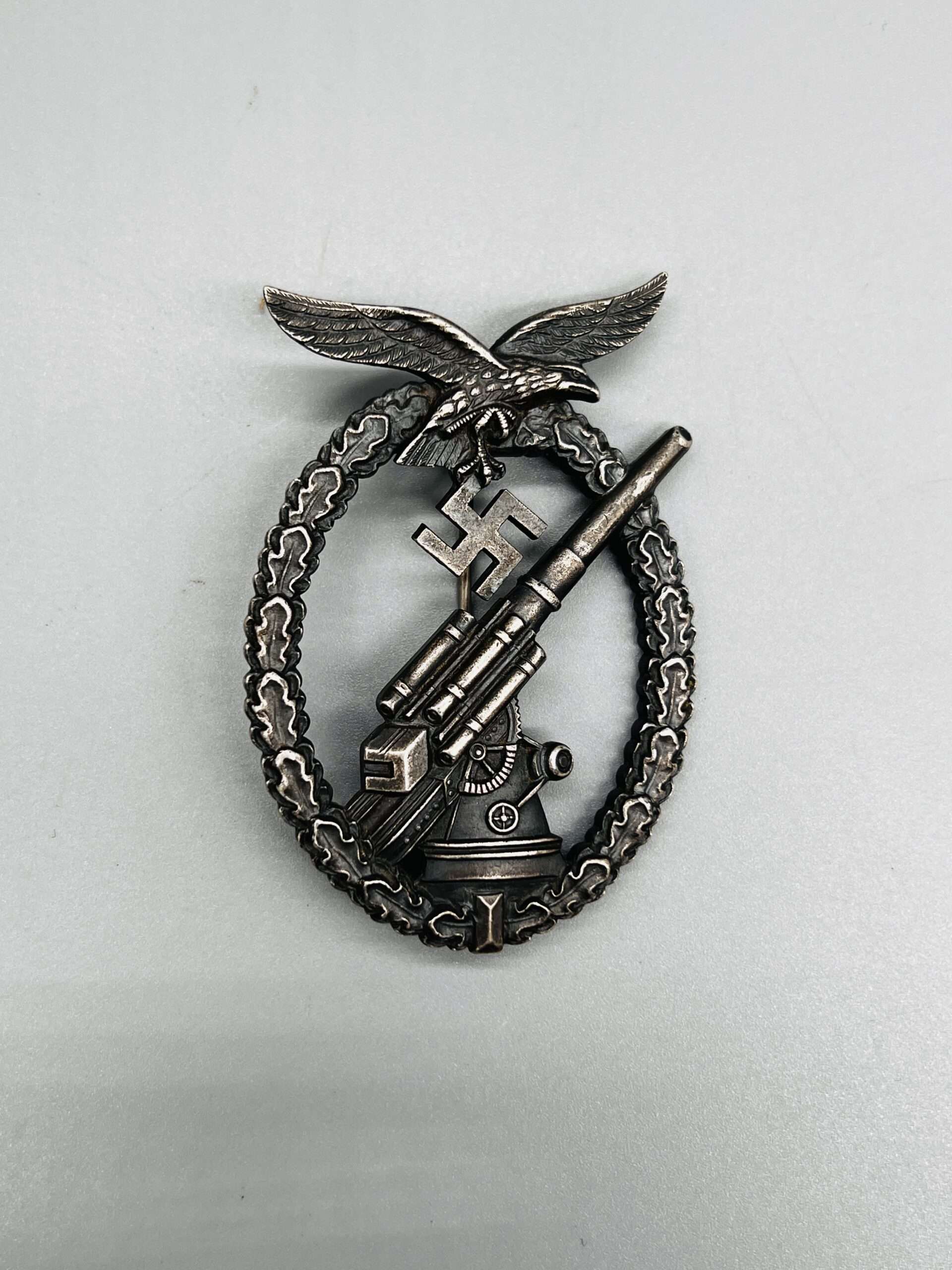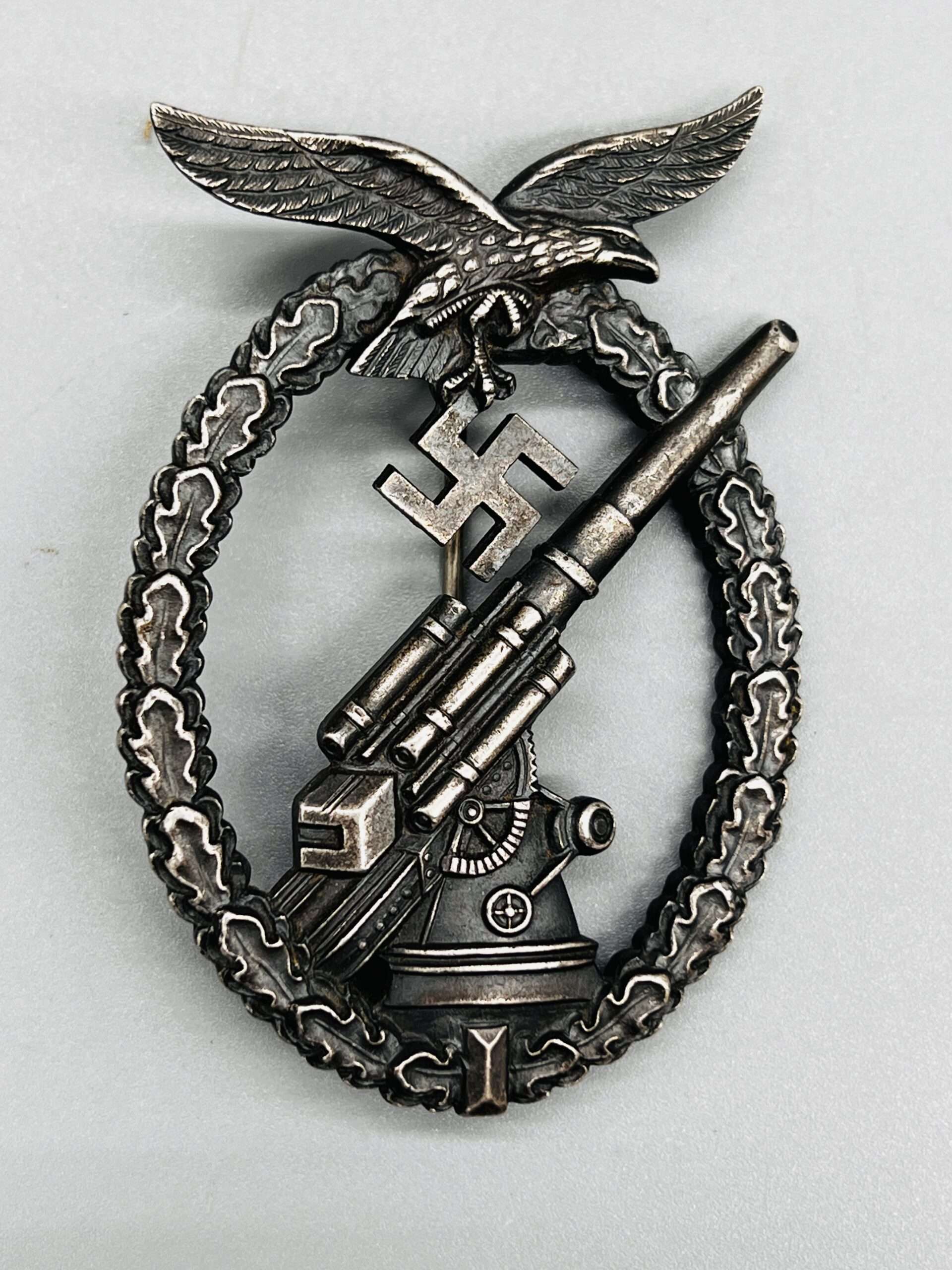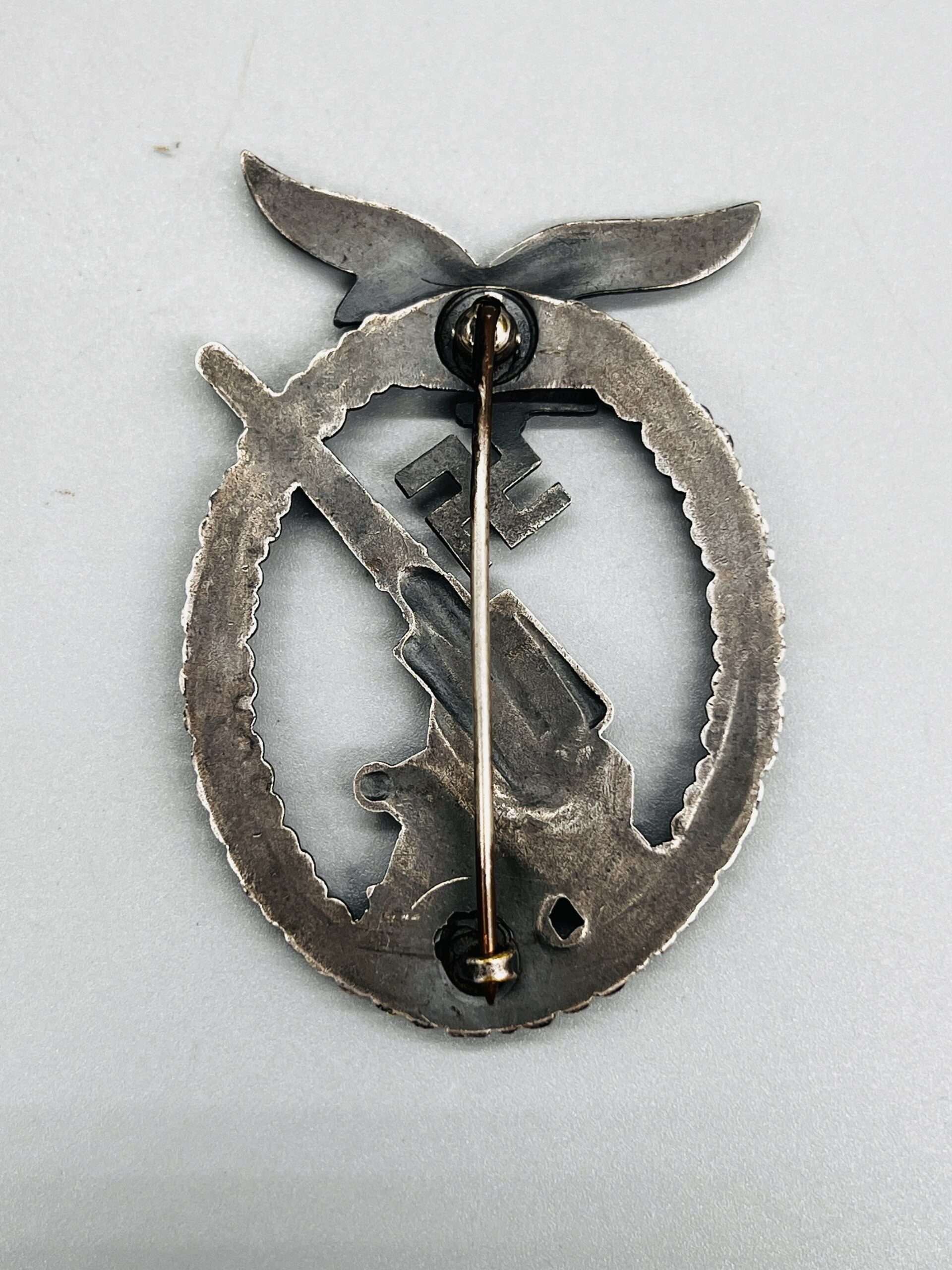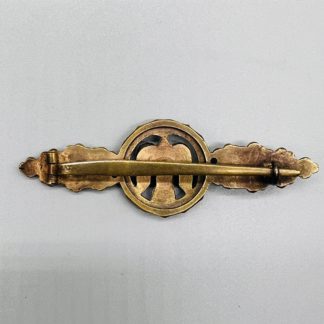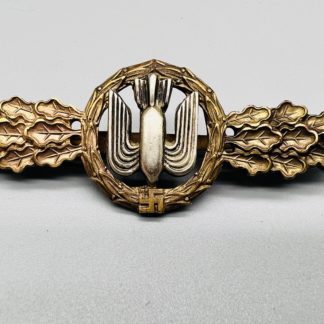Description
WW2 Luftwaffe Flak Badge
Anti-Aircraft Flak Battle Badge (Flak-Kampfabzeichen der Luftwaffe) was a WW2 military decoration, instituted on 10 January 1941 by Herman Goring. The badge was awarded to servicemen of the Flak artillery personal who distinguished themselves in action against aerial or ground attacks.
Designed by Wilhelm Ernst Peekhaus, the badge was of single-piece construction with a pin back and clasp. It was made in one grade; it had a Luftwaffe eagle at the top and an oak leaf wreath around the outside rim. In the middle was an 88 flak gun with the barrel elevated upwards to the right. The award was worn on the lower part of the left breast pocket of the service tunic, underneath the 1st class Iron Cross if awarded.
The Luftwaffe Flak Badge was awarded after the accumulation of 16 points or could also be awarded outside of the points system for an act of merit or bravery in the performance of air defense duties. If the candidates’ battery brought down an enemy aircraft then the crew members were awarded four points. If two batteries were involved then each battery received two points. Both officers and crews were eligible for the badge. The commanding officer for an anti-aircraft unit was eligible for the badge once half of his men also qualified for the badge. The award was also available to searchlight crews and sound-locator crews, which assisted in the detection of aircraft.


